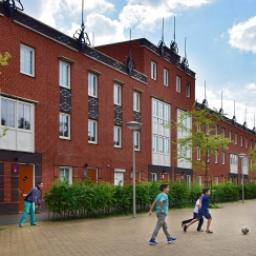A longitudinal analysis of arrival infrastructures
Migrant arrival in rural places
Although traditional migration research focuses predominantly on large cities as ports of entry for migrants, increasingly more migrants start in smaller cities and rural areas. These mobility patterns give access to specific arrival infrastructures with differentiated and often unequal opportunities. Current research has addressed the multiplicity and political nature of arrival infrastructures, but what happens after arrival remains a black box. By building on micro register data, this study employs a longitudinal approach to trace the trajectories of EU labour migrants in the Netherlands across time and space. Our findings indicate that among those who choose to remain in the Netherlands, internal migration is largely characterised by geographical immobility. When people did move to a different type of residential location, it was often to more urbanised places. As mostly migrants with a higher income made these moves, this strengthened the dualisation of more precarious migrants in rural areas and more well-off migrants in larger cities.
Not only temporarily
The findings of this study thus have significant implications for local policymakers, especially for those in rural areas who often think migrant workers are only temporarily in their municipality and are therefore reluctant to realize appropriate amenities. This dynamic results in more leeway for profit-driven actors. The lack of diverse opportunities and amenities and hostility of the local community in new arrival infrastructures can endanger the well-being and social inclusion of in particular lower-income migrants. As such, a mix of people- and place based-policies could be helpful to improve conditions for migrant workers in rural areas.
Authors
Specifications
- Publication title
- A longitudinal analysis of arrival infrastructures: the geographic pathways of EU labour migrants in the Netherlands
- Publication date
- 14 December 2023
- Publication type
- Article
- Publication language
- English
- Product number
- 5164
